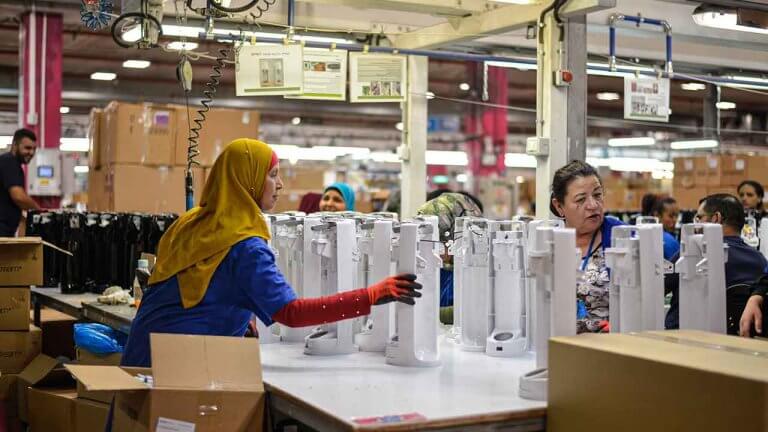Source of Image : Unsplash – https://unsplash.com/photos/alxnBRdFGJI
By Amirul Hamza Abdullah, Research Analyst, Institut Masa Depan Malaysia
Since independence, the manufacturing sector has undergone a terrific shift from relying on processing natural resource products such as rubber and palm oil to manufacture complex technological components such as electrical and electronic components. As a result, the manufacturing sector has contributed to Gross Domestic Production (GDP) from 8.6% in 1960 to 23% in 2020, which has affected the increase in trade from 25% in the early 1980s to 86.4% in 2020.
Throughout the vigorous development of the sector, high-tech products have become a major export. In 2019, the World Bank placed Malaysia as the 4th biggest exporter of high-tech products, where 51.8% of manufactured exports are high-tech products. The manufacturing sector has become the essential agent in the supply chain and is one of the principal instruments to further innovation by conducting research and development aided by the services sector for commercialization activities.
In 2020, the manufacturing sector catalyzed the spread of COVID-19 to a critical level. This is because 6 out of 10 COVID-19 clusters that are still active are spread in manufacturing areas with 19,608 active cases.
However, though COVID-19 was spreading virulently in our communities, the value-added performance of the manufacturing sector is very encouraging to the national economy. As a result, manufacturing only experienced negative value-added growth in the second quarter of 2020 with value-added -18.3% and continued to remain with positive momentum as the third and fourth quarters increased by 3.3% and 3.0%, respectively. At the same time, labour productivity is at an equal level of momentum. As a result, labour productivity in this sector was able to maintain a positive growth momentum during the third and fourth quarters of 2020 with labour productivity growth of 3.7% and 3.2%, respectively.
The planning of economic recovery plans and initiatives after the vaccination should focus on progressive development. The role of the government in this matter is crucial and not only puts the provision of financial assistance during the recovery but navigates in resetting the economy entering new norms.
With satisfactory performance during the pandemic crisis, the manufacturing sector needs to continue to be driven by research and development elements that will elevate innovation, spur commercialization. In addition, the manufacturing sector needs to be driven by planning that emphasizes the production of more complex products. A historical example can be seen with the development of the national car; creating this product has expanded the development of the supply chain as it requires thousands of parts to be developed to build one car.
Malaysia does not need to emulate Korea and Japan in building technology empires. Instead, the manufacturing sector can focus on developing the capability and capacity to create cutting edge new local technologies that are more than just intermediate goods. This plan will create a national company that can provide challenges in producing cutting-edge technology, such as building a drone powered by hydrogen cell by Pulsar UAV Sdn Bhd.
Focus on the manufacturing sector does not mean that other sectors such as services and agriculture are insignificant to the policymaker in formulating any strategies and plans during the endemic and post-vaccination eras. Other sectors need to be given attention, and the planning should also be targeted by looking at each sector’s advantages. During this pandemic in 2020, the manufacturing sector attracted investments worth RM91.3 billion with 1,049 projects approved by the government. The reality is that the manufacturing sector’s development towards innovation will not come easy and will take time to bear fruit. The linkages between production and innovation need to be highlighted as, without a productive enterprise, the finding in innovation will be less useful. Industry player in manufacturing and government should establish a close collaboration to achieve the cutting-edge technology procedure and fulfil the Shared Prosperity Vision 2030.




